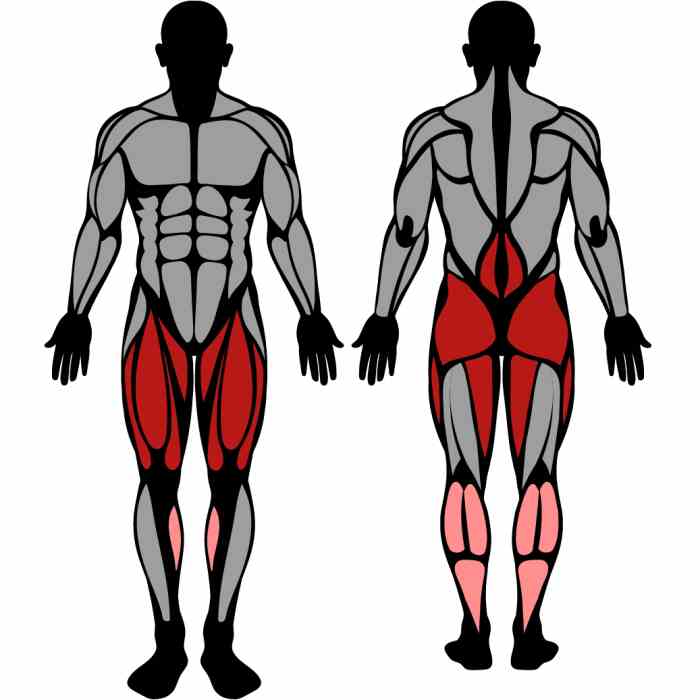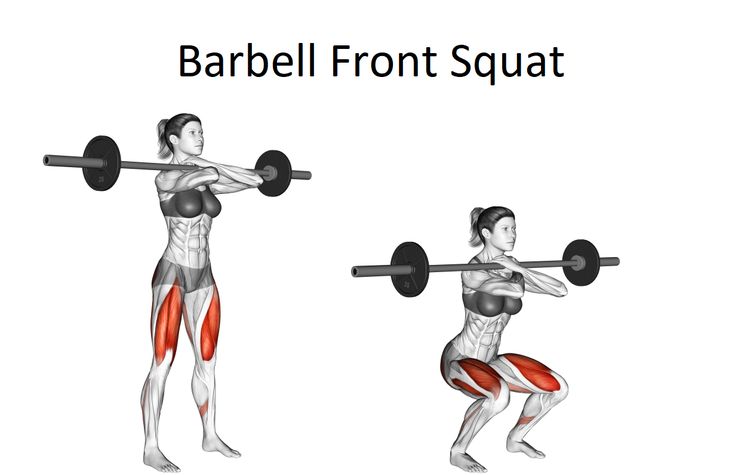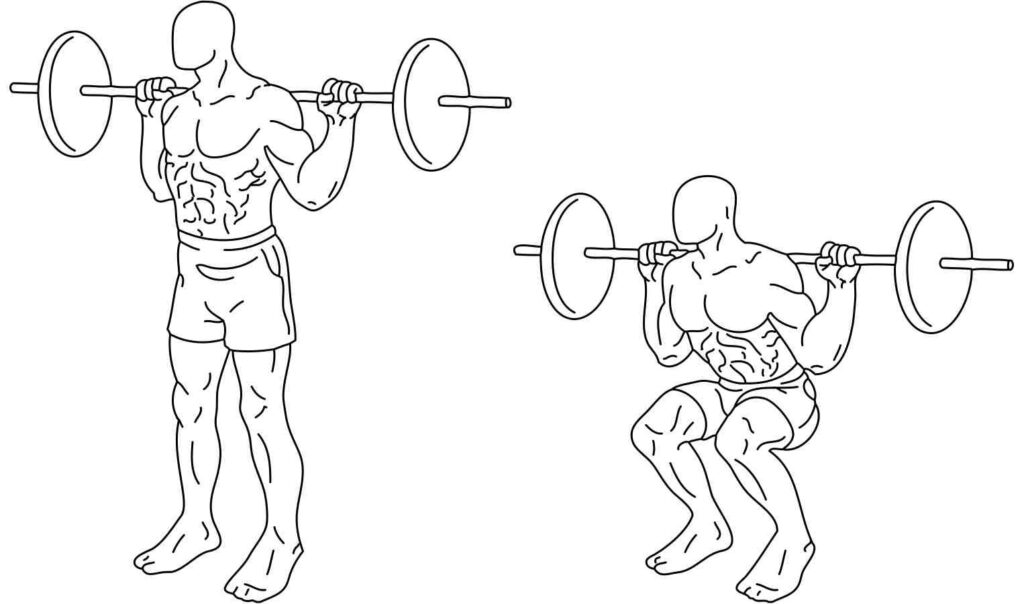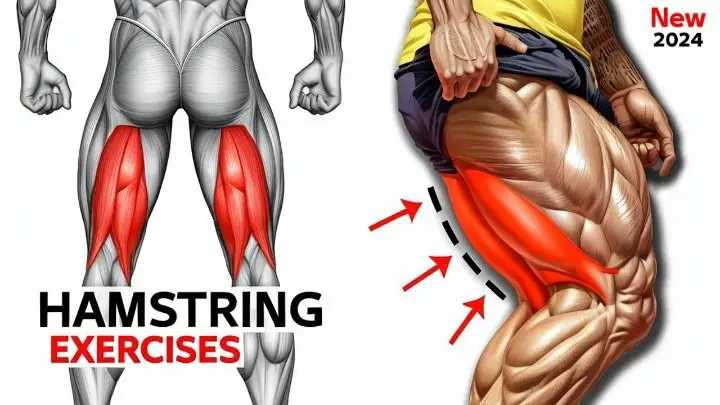When it comes to building strong legs, squats are the go-to exercise for many. But there’s a question that often comes up: Are front squats better than back squats? Both types of squats have their own fans and benefits, making it tough to choose between them. Whether you’re a gym regular or new to working out, knowing the differences can help you pick the right squat for your fitness goals. In this article, we’ll break down the pros and cons of front squats and back squats in simple terms. We’ll look at which muscles they target, how to do them correctly, and which one might suit your needs better. By the end, you’ll have a good idea of which squat to add to your routine.
Introduction to Squats

Squat is a fundamental exercise in the fitness world, known for their ability to build strength, enhance muscle growth, and improve overall athletic performance. Whether you’re a seasoned athlete or just starting your fitness journey, squats are a staple in most workout routines due to their effectiveness and versatility.
At their core, squats are a compound movement that primarily targets the muscles of the lower body. The main muscles engaged during a squat include the quadriceps, hamstrings, glutes, and calves. Additionally, squats also activate the core muscles, which help stabilize the body throughout the movement. This makes squats not only a powerful leg exercise but also a great way to develop core strength and stability.
SHOP FOR THE ADJUSTABLE DUMBBELL SETS ON AMAZON
By incorporating squats into your fitness routine, you can reap numerous benefits such as increased muscle mass, improved balance and coordination, enhanced flexibility, and a stronger, more resilient lower body. However, with several variations of squats available, such as front squats and back squats, it’s essential to understand the differences between them to determine which one aligns best with your fitness goals.
Front Squats vs Back Squats
Understanding the differences between front squats and back squats is crucial for anyone looking to optimize their workout routine. Here are the key distinctions:
1. Bar Placement
- Front Squats: The barbell rests on the front deltoids and clavicle, held in place by the hands. This forward position requires a more upright torso to maintain balance and support the bar.
- Back Squats: The barbell rests on the upper traps (high-bar) or across the rear deltoids (low-bar), behind the head. This position allows for a slight forward lean of the torso.
2. Muscle Activation
- Front Squats: Primarily target the quadriceps due to the more upright torso position. They also engage the core significantly to maintain stability and balance.
- Back Squats: Engage a broader range of muscles, including the quadriceps, hamstrings, glutes, lower back, and core. The slight forward lean allows for greater activation of the posterior chain.
3. Technique and Form
- Front Squats: Require good wrist, shoulder, and ankle mobility. The elbows should stay high, and the chest up to keep the bar in place.
- Back Squats: Require more hip and lower back mobility. The movement allows for a deeper squat, engaging more muscles but also demanding more from the hips and lower back.
4. Flexibility and Mobility Requirements
- Front Squats: Demand greater flexibility in the wrists, shoulders, and thoracic spine. Ankle mobility is also critical to maintain an upright posture.
- Back Squats: Require significant hip and ankle flexibility, but less shoulder and wrist flexibility compared to front squats.
5. Load Capacity
- Front Squats: Typically, less weight can be lifted compared to back squats because the upright position and core stabilization are more challenging.
- Back Squats: Allow for heavier weights to be lifted due to the stronger engagement of the posterior chain and a more stable bar position.
6. Injury Risk
- Front Squats: Generally pose a lower risk of lower back injury due to the upright posture, but can strain the wrists and shoulders if flexibility is lacking.
- Back Squats: Have a higher risk of lower back injury, especially if performed with poor form or excessive weight. Proper technique is essential to prevent injuries.
7. Training Goals
- Front Squats: Ideal for improving quadriceps strength and core stability. They are beneficial for athletes requiring strong, explosive legs, such as sprinters and jumpers.
- Back Squats: Better for overall lower body strength and muscle mass development. They are a staple in powerlifting and general strength training due to their comprehensive muscle engagement.
8. Functional Application
- Front Squats: Mimic the movement patterns of activities that require an upright posture, such as Olympic lifts (clean and jerk) and certain sports movements.
- Back Squats: Provide a foundation for overall strength, benefiting activities and sports that require powerful leg drive and hip extension, like football and rugby.
SHOP FOR THE BARBELL WEIGHTS ON AMAZON
Both front squats and back squats have unique benefits and challenges. The choice between them should be based on individual fitness goals, flexibility, and comfort with the technique.
Muscle Activation

Front squats and back squats, though similar in their fundamental movement pattern, engage different muscle groups due to their distinct positioning and mechanics.
Front squats place a greater emphasis on the quadriceps due to the more upright torso position required to maintain balance. This upright stance shifts the load forward, forcing the quadriceps to work harder to extend the knees and support the body’s weight. Additionally, the front squat requires significant core engagement to stabilize the torso and prevent forward lean, which enhances core strength and stability. The glutes and hamstrings are involved but to a lesser extent compared to back squats.
In contrast, back squats, especially when performed with a low-bar position, target the posterior chain more intensely. The barbell rests across the upper traps or rear deltoids, prompting a forward lean in the torso. This forward lean shifts the emphasis to the hamstrings and glutes, as they work to extend the hips and stabilize the movement. The lower back also becomes a crucial stabilizer, helping to maintain proper posture throughout the squat. The quadriceps are still engaged but are less dominant in comparison to front squats.
Advantages of Barefoot Running
Overall, while both squats contribute to lower body strength and development, front squats are particularly effective for developing the quadriceps and enhancing core stability, whereas back squats provide a more balanced development of the posterior chain, including the glutes and hamstrings.
Benefits of Front Squats and Back Squats
There are many benefits of each type of squat:
Benefits of Front Squats:
- Opens Up Your Hips: Front squats can help improve hip mobility, which is beneficial for athletes and those who sit for long periods.
- Lighter Weight, Same Muscle Recruitment: Even though front squats are performed with lower weight, they are as effective in muscle recruitment as back squats. This means you get the same muscle-building effects without the higher compressive forces that come with the back squat.
- Keeps Your Back Straight: The front squat forces you to keep your chest up and your back straight throughout the lift. This can be beneficial for maintaining good posture and reducing the risk of back injuries.
- Strengthens Quadriceps, Hamstrings, and Glutes: Front squats are known for developing strength and size within the leg muscles, specifically within the quadriceps, hamstrings, and glutes.
- Improves Mobility and Trunk Stability: The front squat brings the benefits of mobility, trunk stability, and a more upright posture.
Benefits of Back Squats:
- Bigger, Stronger Leg Muscles: Back squats are known for developing bigger, stronger leg muscles, including the glutes, quads, hamstrings, and calves.
- Improved Core Strength: Back squats can help improve core strength, which is beneficial for overall fitness and stability.
- More Confidence: Back squats can also increase confidence, as they require courage and determination to perform.
- Ability to Produce More Power: Back squats can help improve your ability to produce more power, which is beneficial for athletic performance.
- Improved Mobility: Back squats can help improve your ankle, knee, and hip flexibility.
- Prevents Injuries: Back squats can help prevent injuries by strengthening joints, muscles, and bones.
- Improves Sprint Performance: Back squats can help improve sprint performance by strengthening the muscles that support power, speed, and stability.
SHOP FOR THE SQUAT RACK ON AMAZON
Remember, the choice between front squats and back squats often depends on an individual’s fitness goals, mobility, and preferences. Both front squats and back squats can be valuable additions to your workout routine.
Form and Technique
Let’s discuss the form and technique for both front squats and back squats:
Front Squat

How to Perform Front Squats Correctly:
- Stand with your feet about hip-width apart, toes pointed slightly out.
- With hands slightly wider than shoulder-width, grip the barbell across the front of your shoulders.
- Keep the barbell close to you, elbows high.
- Squeeze your core, keep your chest up, and your spine straight.
- Push your hips back and bend at the knees to lower into a squat until your thighs are parallel to the ground.
- Straighten your hips and knees to drive up to the starting position.
Common Mistakes in Front Squats:
- Dropping your elbows
- Leaning too far forward
- Not engaging your core
- Letting your knees cave in
- Using arms to support the bar
- Putting the bulk of your weight on your heels or toes
- Placing your feet narrower or wider than shoulder-width
Back Squat

How to Perform Back Squats Correctly:
- Stand with the bar on your back, and your heels shoulder-width apart.
- Bend your legs until your hips are lower than the top of your knees.
- Keep the bar balanced over your midfoot the whole time.
- Squat back up by straightening your knees and hips.
- Stand with your hips and knees locked at the top.
Common Mistakes in Back Squats:
- Holding The Bar Across Your Neck
- Your Knees Cave In
- You Round Your Lower Back
- Your Hips Rise Faster Than Your Shoulders
- Your Heels Lift During Squats
- You’re Sitting Too Far Back
Remember, the key to performing squats correctly is to maintain proper form and technique. It’s always a good idea to start with lighter weights and gradually increase as your strength and technique improve.
Who Should Do What
Different individuals might prefer one type of squat over the other based on their personal goals, body mechanics, and fitness needs. Here’s a breakdown of who might lean towards front squats or back squats:
Chest Supported Row and Biceps
Front Squats
- Athletes: Front squats have a high application to Olympic weightlifting, CrossFit movements (pistol squats, wall balls, cleans), and powerlifting. They can increase strength specific to movements like the clean, back squat, and competitive fitness movements.
- Individuals with Good Upper Body Strength and Mobility: Front squats require lifters to have greater mobility in the ankles, hips, and shoulders compared with other lower body movements in the gym. They also require a high level of motor control and body awareness.
- Individuals with Back Pain: A heavy barbell always sitting on top of your spine can wear on you over time. So if you experience any back pain when back squatting, front squatting might be a better option.
- Individuals Lacking Wrist/Shoulder Mobility: Performing front squats with straps is a practice popularized by powerlifters but is now commonly used by bodybuilders, gym-goers, injured weightlifters, and those who lack wrist/shoulder mobility.
Back Squats
- Individuals Looking to Increase Strength, Build Muscle, or Bulletproof Their Body: Barbell back squats are just about the best compound exercise you can do for your lower body. Whether you’re looking to increase strength, build muscle, or bulletproof your body against anything life throws at it, you should be squatting.
- Individuals with Limited Mobility: There are scaling options to make barbell back squats suitable for beginners or those with limited mobility.
- Performance-Oriented Athletes: Performance-oriented athletes generally do lots of full squats, often with a barbell across their shoulders, as part of their regular exercise routine.
SHOP FOR THE WEIGHTLIFTING BELT ON AMAZON
Remember, the choice between front squats and back squats often depends on an individual’s fitness goals, mobility, and preferences. Both front squats and back squats can be valuable additions to your workout routine.
Incorporating Squats into a Workout Routine
Incorporating squats into your workout routine can be a game-changer for your fitness journey. Here are some ways to do it:
- Frequency: You could aim to incorporate sets of bodyweight squats into your routine 2-3 times a week. More experienced gym-goers can incorporate barbell squats into their workout routine, preferably during a lower or full-body workout day. Depending on your current strength and fitness levels, barbell squats could be performed 1-2 times weekly.
- Comprehensive Leg Workout: To maximize the benefits of squats, it is essential to incorporate them into a comprehensive leg workout routine. Pairing squats with exercises such as leg presses, lunges, hamstring curls, and calf raises can provide a well-rounded leg workout that targets various muscle groups and movement patterns.
- Squat Variations: When incorporating squat variations into your workout routine, it’s essential to choose variations that align with your fitness goals, address specific muscle groups, and suit your current fitness level.
- 12-Week Squat Program: If you’re interested in moving some serious weight with squats, you might consider a 12-week squat program. This program is based on using a percentage of your max for your work sets to help you improve your max.
- Squat Test: Before starting a squat program, it’s a good idea to perform a deep bodyweight squat test. This test can help you assess your current mobility and strength, which can guide your squat training.
Comparing Rack Pulls and Deadlifts
Remember, the key to incorporating squats into your workout routine is to start slow, maintain proper form, and gradually increase the intensity as your strength and technique improve.
FAQs
Q 1. What equipment do I need for front squats and back squats?
Ans. You’ll need a barbell and a squat rack for both front squats and back squats. Some people also use weightlifting shoes, a weightlifting belt, or knee sleeves for additional support.
Q 2. How can I progress if I find front squats or back squats too easy?
Ans. You can increase the weight you’re lifting, add more reps or sets, or try more challenging variations of squats. Another way to progress is to decrease the rest time between sets.
Q 3. What should I do if I find front squats or back squats too challenging?
Ans. You can start with bodyweight squats or goblet squats, which are easier variations. As you build strength and improve your form, you can gradually progress to front squats or back squats.
Q 4. Can I still do squats if I have a knee injury?
Ans. It depends on the nature and severity of your injury. It’s best to consult with a healthcare professional or a physical therapist before continuing with squats or any other exercise after an injury.
Q 5. How can I incorporate squats into a HIIT (High-Intensity Interval Training) workout?
Ans. You can include squats as one of the high-intensity exercises in your circuit. For example, you could do 30 seconds of squats, rest for 10 seconds, then move on to the next exercise.
Q 6. What are some other squat variations I can try?
Ans. There are many squat variations you can try, such as goblet squats, sumo squats, pistol squats, split squats, and overhead squats. Each variation targets different muscle groups and provides its own unique benefits.
Q 7. Can squats help with weight loss?
Ans. Yes, squats can contribute to weight loss by helping you build muscle. Muscle tissue burns more calories at rest than fat tissue, so increasing your muscle mass can help increase your metabolism.
Q 8. How often should I do squats for optimal results?
Ans. This can vary depending on your fitness level and goals, but a general guideline is to include squats in your workouts 2-3 times per week. Always allow at least one day of rest between workouts that target the same muscle group to allow for recovery and muscle growth.
Conclusion
In conclusion, both front squats and back squats are powerful exercises that can significantly enhance your strength, mobility, and overall fitness. While they target similar muscle groups, the emphasis varies based on the type of squat. Front squats tend to focus more on the quadriceps and core, while back squats engage more of the glutes and hamstrings.
The choice between front squats and back squats often comes down to personal fitness goals, mobility, and preferences. Some might prefer front squats for their ability to challenge the core and improve posture, while others might favor back squats for their potential to lift heavier weights and target the posterior chain.
Regardless of the type, proper form and technique are crucial in performing squats to prevent injury and maximize benefits. It’s always a good idea to start with lighter weights and gradually increase as your strength and technique improve.

Good day, and welcome to Fitthour. My name is Shubham Vijay, and I am a certified personal trainer and nutrition coach with 6 years of experience in the fitness industry. At Fitthour, we specialize in types of training, such as strength training, cardio, or HIIT, and our mission is to help clients achieve their fitness goals and improve their overall health.



